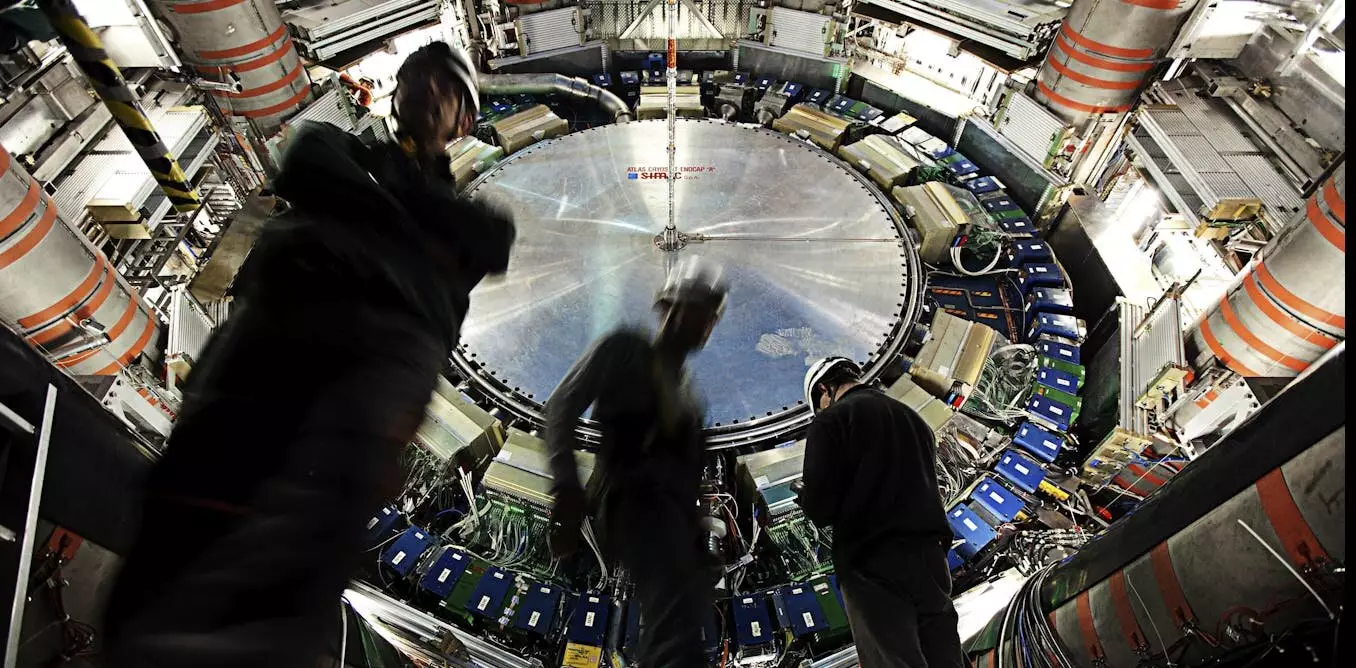Quantum entanglement is one of the most intriguing and perplexing phenomena in the realm of physics. It challenges our classical understanding of the universe by suggesting that two particles can be correlated in such a way that the state of one instantly influences the state of the other, regardless of the distance separating them. This bizarre non-locality has long captured the imagination of scientists and philosophers alike, stirring debates about the nature of reality and our understanding of space and time.
In daily life, we perceive objects as either discrete entities or as connected through physical means—like a string tying two balls together. However, entangled particles are a distinct case; they exist in a shared quantum state without any direct, tangible link. This raises profound questions. How do we comprehend a connection that operates beyond classical constraints? The research conducted by the ATLAS collaboration at the Large Hadron Collider (LHC) in Geneva opens new doors to understanding this complexity, particularly through their recent findings involving top quarks.
The LHC stands as the pinnacle of particle physics experimentation, a gargantuan facility designed to collide protons at mind-boggling energies. In this cutting-edge arena, scientists have recently identified entanglement between pairs of top quarks—the heaviest known elementary particles. The results, detailed in a pivotal paper published in *Nature*, represent a significant leap in our ability to study entanglement under conditions that were previously thought exceedingly rare.
Top quarks, unlike their lighter counterparts, possess remarkable mass, teasing scientists with potential insights into both established and emerging physics theories. Their unique properties allow researchers to investigate entanglement under extreme conditions, providing a rare glimpse into the fundamental behavioral rules governing the universe. This breakthrough not only validates fifteen years of theoretical speculation but also sets the stage for revolutionary developments in quantum science.
The notion of entanglement has even found its way into popular culture, most notably highlighted in the science fiction miniseries adaptation of Liu Cixin’s *3 Body Problem*. In the series, extraterrestrial beings utilize entangled particles to manipulate technology on Earth from afar, creating an inventive narrative device rooted in quantum principles. However, this portrayal serves as a double-edged sword; while it brings public attention to quantum mechanics, it also obscures the reality that entanglement does not facilitate faster-than-light communication.
Current scientific understanding maintains that while entanglement can link two systems, it cannot be employed as a signal-transmitting mechanism. This fact resonates strongly in the results gleaned from the ATLAS experiment, as physicists continually explore the limits and nuances of this fascinating property without succumbing to colloquial misconceptions.
The exploration of top quarks is not merely an endeavor for curiosity’s sake; it may unlock answers to some of physics’ most pressing questions. Being far heavier than any other known quark—184 times the mass of a proton—top quarks challenge our understanding of particle physics. Their size and weight suggest they may interact with new forces or properties yet to be discovered, hinting at a deeper layer of reality that eludes current comprehension.
As these scientists continue to investigate the behavior of top quarks in relation to entanglement, the results may usher in a new epoch of understanding. The contradictions in our existing framework of physics hint that anomalies could serve as bulwarks for a more sophisticated model, perhaps integrating previously unexamined forces.
Despite the headway made in this research, entanglement itself is inherently fragile. Most experiments requiring these delicate quantum states run under ultra-cold temperatures to minimize external disturbances. The identification of entanglement in top quark pairs at the LHC is groundbreaking, yet it underscores the importance of maintaining ideal conditions, given the volatility of quantum states previously observed in low-energy systems.
Although direct applications of this research are not yet apparent—after all, lugging the LHC around is hardly practical—the knowledge gained enriches our overall comprehension of quantum phenomena and could pave the way for advancements in quantum computing and other burgeoning fields.
As humanity delves deeper into the quantum realm, the revelations arising from the ATLAS experiment provide a profound opportunity to reexamine our understanding of the universe. The extraordinary behavior of entangled particles, especially top quarks, reinforces the notion that our current scientific paradigms may only scratch the surface of the mysteries that lie beneath. As scientists continue their explorations, the dance of entanglement promises to offer exciting insights, illuminating the unseen connections that bind the fabric of reality. Whether or not these discoveries yield new technologies or theories remains to be seen, yet the journey into the quantum unknown is a thrilling expedition that beckons us onward.


Leave a Reply
You must be logged in to post a comment.